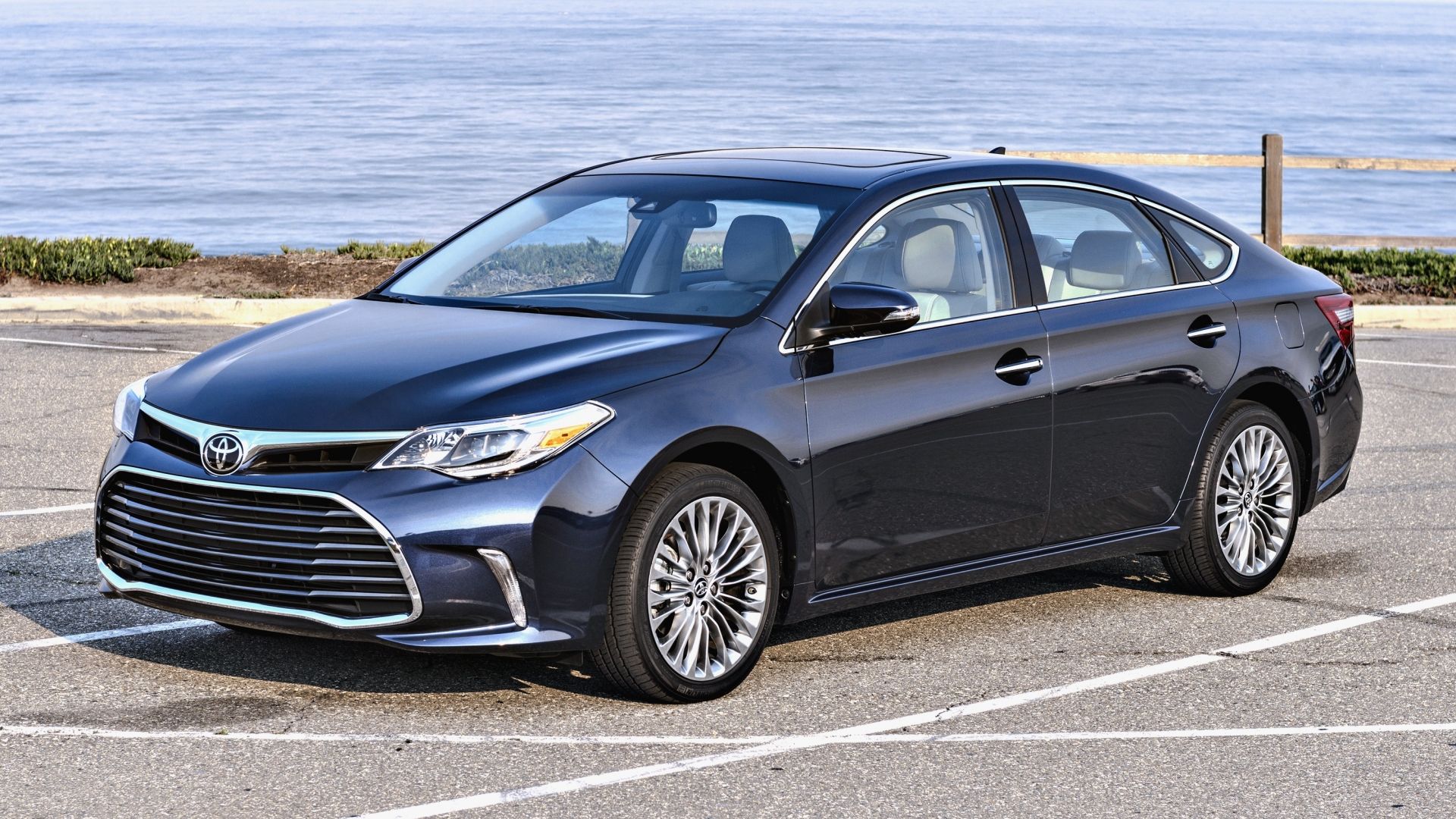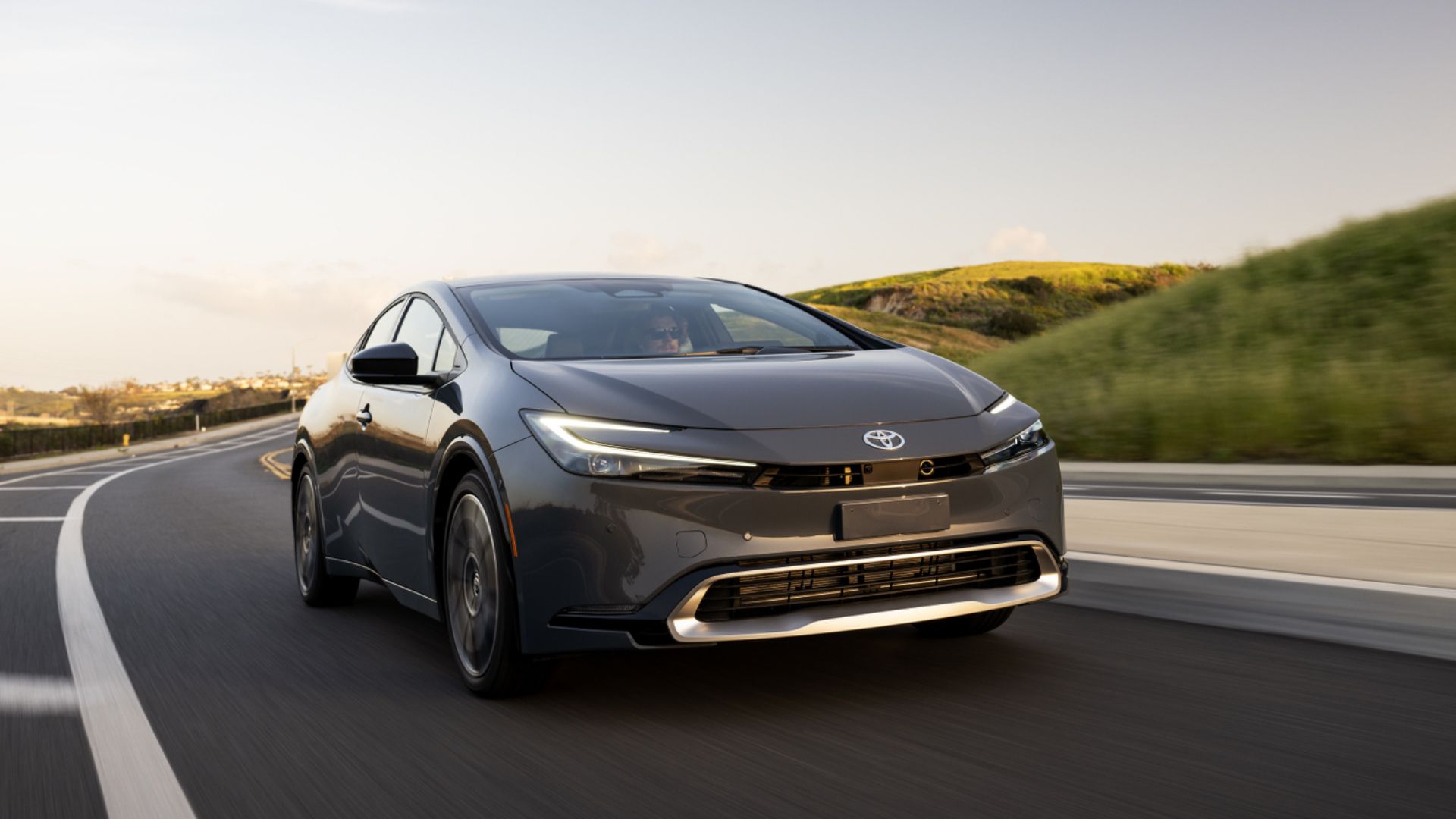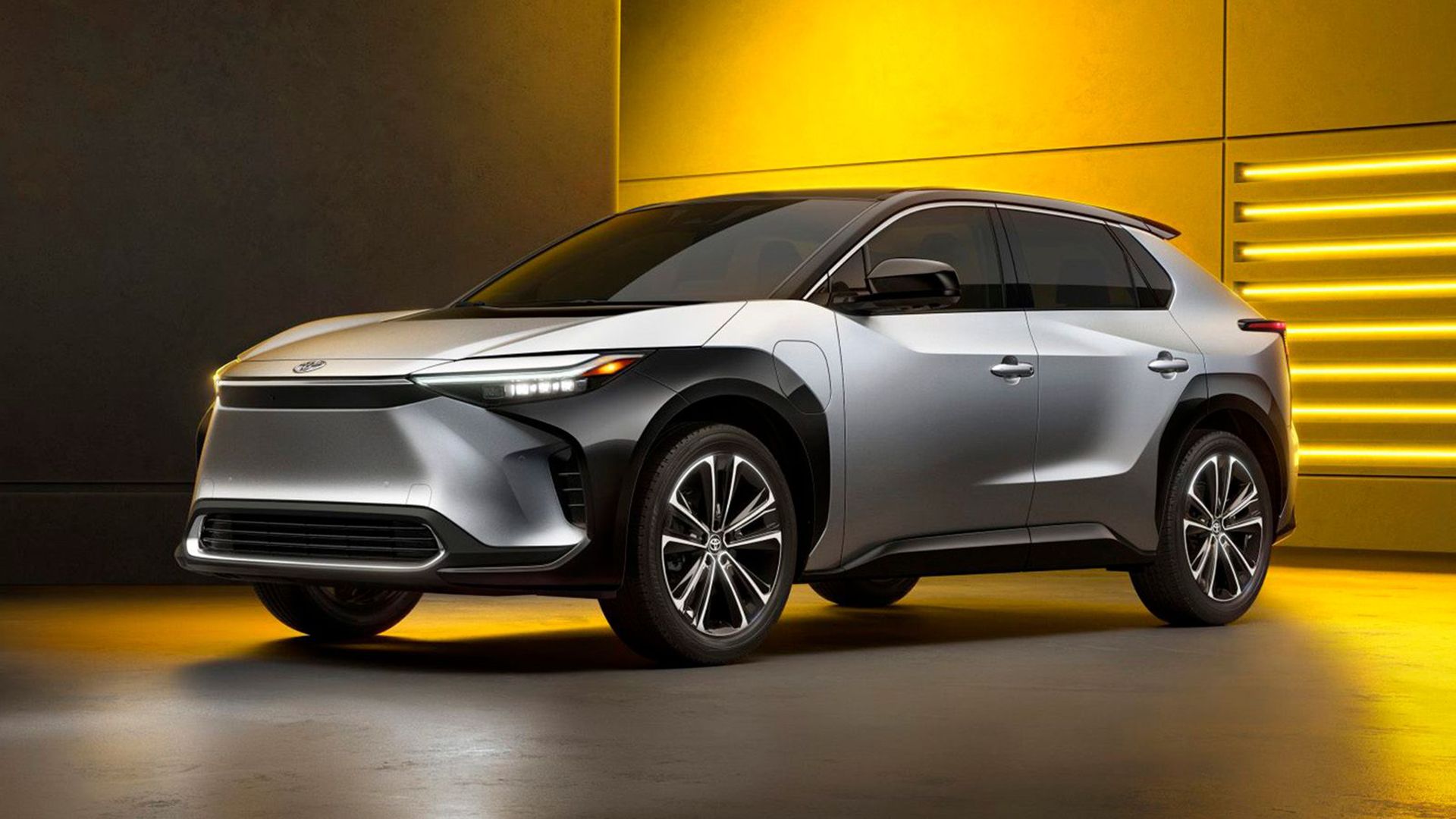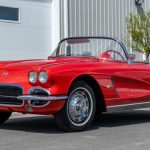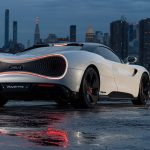For 25 years now, Toyota has been rolling out hybrids and electric cars, and yes, in the beginning, it may not have been seen as the coolest thing to be seen driving around in, but boy, did it lay some groundwork for the hybrid car and electric car segments! Without the work that Toyota did with the 1997 Prius, things could have taken a lot longer to get where they are today.
From an awesome range of hybrids and an electric car (at the moment), to work that is being done today with hydrogen powerplants in what is promised to be some of the most cutting-edge cars, technology-wise, that will grace our streets in the coming years, Toyota is still in the game when it comes to hybrid, electric cars and has to be the forerunner for hydrogen-powered cars.
With some recent debate over whether Toyota has fallen behind in the electric car world, here’s a look at the illustrious and not-so-illustrious side of the Japanese company over the last 25 years, looking at its past, present, and future vehicles.
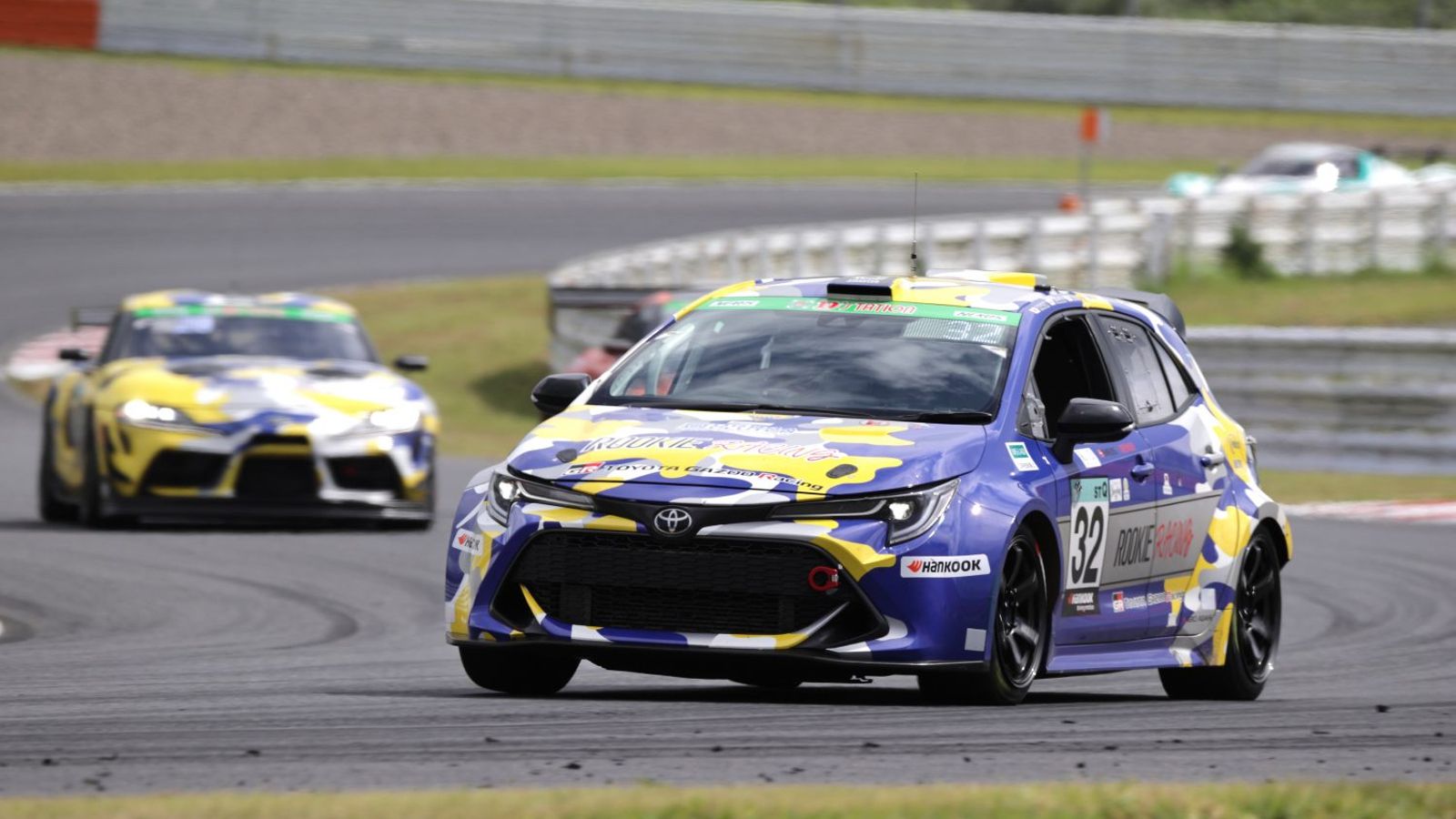
Proof That Toyota Is Betting Big On Hydrogen Despite The Development Of Its 745-mile Solid-state Battery
Hydrogen may seem like a pipe dream, but Toyota truly believes in it and is not slowing down despite its progress in EVs.
In order to give you the most up-to-date and accurate information possible, the data used to compile this article was sourced from various manufacturer websites and other authoritative sources, including EPA.gov, Edmunds, Toyota Press Room, Fuel Economy.gov, CNBC Car & Driver, Reuters, and Statista.
How Toyota Laid The Groundwork For Electric Cars
In the beginning, there was the 1997 Toyota Prius, the first mass-market hybrid car. Since then, there have been hundreds of different variations of hybrid vehicles that all have Toyota to thank for the bravery, for the time, into unknown roads. Where would the automotive world be without the original Prius?
The Original, The 1997 Toyota Prius
Launched in Japan in 1997 and subsequently debuting in America in 2000, the first-generation Toyota Hybrid encapsulated forward-thinking into the 21st Century and in cutting emissions on the road.
Featuring the all-new 1997 Toyota Hybrid System (now referred to as the Hybrid Synergy Drive or HSD) coupled with a 1.5-liter NZ Series engine, the pairing of an Atkinson Combustion Cycle with a gasoline engine and a high-torque electric motor meant that fuel efficiency went through the roof with reported miles per gallon of up to 50 MPG. The final ingredient that was added, and which still makes up the basis of all Toyota hybrid vehicles today, was the nickel-metal hydride battery pack behind the backseats.
Though some would argue that efficiency took precedent over style, that is exactly what Toyota was aiming for; a car that would mean you didn’t have to fill up as often.
Past Toyota Hybrid And Electric Cars Specifications
|
Model |
Prius |
Highlander Hybrid |
Camry Hybrid |
Prius Prime/Plug-In |
Avalon Hybrid |
RAV4 Hybrid |
Mirai |
Corolla |
Venza |
RAV4 Prime |
Sienna |
|
Engine/Motor |
1.5 Liter, Inline Four/288 Volt Motor |
3.3 Liter V-6/HSD Motor |
2.4 Liter, Inline Four/30 KW HSD Motor |
1.8 Liter, Inline Four/ 23 KW HSD or 53 KW HSD Motor |
2.5 Liter, Inline Four/149 KW HSD Motor |
2.5 Liter, Inline Four/50KW HSD Motor |
4JM Hydrogen Fuel-Cell Powered (FCP) 113 KW Motor |
1.8 Liter, Inline Four/53KW HSD Motor |
2.5 Liter, Inline Four/88KW HSD Motor |
2.5 Liter, Inline Four/151KW MSD Motor |
2.5 Liter, Inline Four/42KW MSD Motor |
|
Horsepower |
114 Horsepower |
268 Horsepower |
187 Horsepower |
134 Horsepower |
200 Horsepower |
194 Horsepower |
152 Horsepower |
121 Horsepower |
219 Horsepower |
302 Horsepower |
245 Horsepower |
|
Torque |
82 Pound-Feet |
212 Pound-Feet |
138 Pound-Feet |
105 Pound-Feet |
199 Pound-Feet |
152 Pound-Feet |
247 Pound-Feet |
105 Pound-Feet |
Unpublished |
199 Pound-Feet |
199 Pound-Feet |
|
Drivetrain |
Front-Wheel Drive |
Front-Wheel Drive or All-Wheel Drive |
Front-Wheel Drive |
Front-Wheel Drive |
Front-Wheel Drive |
All-Wheel Drive |
Front-Wheel Drive |
Front-Wheel Drive |
All-Wheel Drive |
All-Wheel Drive |
Front-Wheel Drive |
|
Transmission |
CVT |
CVT |
CVT |
CVT |
Planetary eCVT |
Shiftable CVT |
One Speed Direct-Drive |
CVT |
eCVT |
CVT |
eCVT |
|
Combined MPG |
41 MPG |
27 MPG |
46 MPG |
50 MPG |
40 MPG |
32 MPG |
N/A |
52 MPG |
39 MPG |
38 MPG |
36 MPG |
|
0 – 60 MPH |
N/A |
N/A |
N/A |
11.3 Seconds |
8.4 Seconds |
8.3 Seconds |
8.7 Seconds |
N/A |
N/A |
5.4 Seconds |
7.7 Seconds |
|
Top Speed |
N/A |
N/A |
N/A |
112 MPH |
117 MPH |
114 MPH |
111 MPH |
N/A |
N/A |
117 MPH |
116 MPH |
(Information gathered from Toyota and Fuel Economy.gov)
Electric Cars And Hybrids From Toyota’s Past That Shook The Automotive World
Admittedly, there aren’t many EVs to choose from made by Toyota in the past, but there are more hybrids that still achieve ridiculous miles per gallon. In the early part of the 2000s, cars were still being churned out by many manufacturers to go fast, look sporty, and turn heads, not necessarily to save you money on driving costs or reduce your carbon footprint. Toyota, along with making some ridiculously cool cars like the 2002 Toyota MR2, was seemingly preoccupied with creating cars that would go further for less.
Take the Avalon Hybrid, for example. Yes, it isn’t the prettiest car ever made, but it can still achieve zero-to-sixty in less than 10 seconds, give you a combined miles per gallon of 40 MPG and, still produce 200 horsepower from the motor and engine combination. Then there was the futuristic hydrogen battery-powered Mirai.
What was promised was, unfortunately, a bit of a flop because of the lack of fueling stations for hydrogen, but according to Toyota, you can drive 300 miles on the 11 pounds of pressurized hydrogen stored. So, even if it didn’t kick off then, Toyota is not giving up on hydrogen vehicles yet, which means the Mirai is here to stay for a long time.
- The ingenious hybrid motor in the 1997 Prius could fit in an engine bay alongside a gasoline powertrain.
- The ’97 Prius had high miles per gallon, even by today’s standards.
- The original design is still the basis for Toyota hybrids today.
- A clear indicator of what is to come over the next 25 years of hybrid and electric cars, not just Toyota’s.
- Surprisingly, for a manufacturer that led the way, very few EVs.
- Always looking to the future of motoring with new ideas.
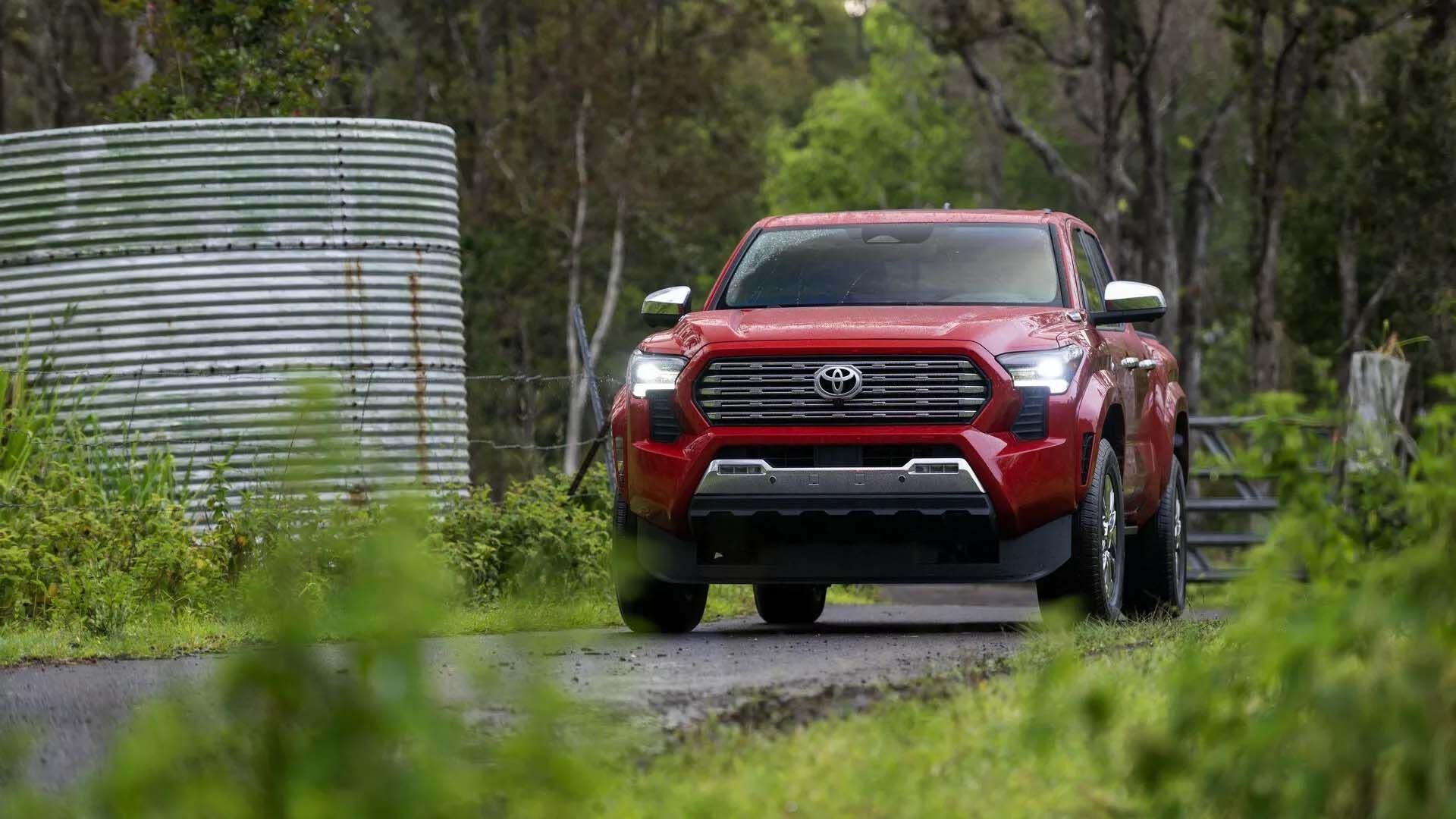
Cool Details About The 2024 Toyota Tacoma Hybrid You Might Have Missed
The Tacoma Hybrid is a tech-infused powerhouse ready for adventure with hybrid efficiency, off-road capability, and a bed full of surprises.
Toyota Staying With The Times And Delivering More Top-Class Cars
Toyota has been criticized for not staying up to date with changing trends and falling behind in producing all-electric cars, but more on this later. What does matter is that Toyota is currently still producing top-end hybrid cars that are still capable of delivering high miles per gallon figures and driver satisfaction (matter of opinion obviously!)
The Toyota Electric And Hybrid Range Today
Today, Toyota makes and sells the highest number of hybrid cars compared to any other manufacturer on earth. In 2022, it sold more than two million hybrid cars across the globe, and over 10 million in its history. Currently, there are thirteen available hybrid models made by Toyota, with some familiar model names such as the Prius, RAV4, and Corolla making appearances. Surprisingly though, Toyota only has one fully electric car for sale and one fuel-cell-powered electric vehicle for sale. These are the 2023 bZ4X and the 2023 Mirai.
Boasting an all-new e-TNGA (Toyota New Global Architecture) platform which promises to take up less room but still delivers driving performance, the Toyota bZ4X will be able to deliver a range of up to 252 miles from a single charge and provide all the modern tech expected from an electric car. On the other side of the spectrum, the 2023 Toyota Mirai promises a range of up to 402 miles once it has been fully fueled.
Boasting a hydrogen fuel cell, electricity to power the car is made in the fuel stack when air enters from the front grille and hydrogen from the cell meet. Alongside some sci-fi-esque powertrain, the Mirai also has tonnes of safety features for driver confidence, an elegant interior full of interactive gadgets, and, according to Toyota, emits nothing but water. Something that Toyota wants us all to get behind!
Current Toyota Electric And Hybrid Models
|
Model |
2023 bZ4X |
2023 Corolla Cross Hybrid |
2023 Corolla Hybrid |
2023 Highlander Hybrid |
2023 Mirai |
2023 Prius |
2023 Prius Prime |
2023 RAV4 Hybrid |
2023 RAV4 Prime |
2023 Sienna |
2023 Sequoia |
2023 Crown |
2023 Tundra |
2023 Venza |
|
Engine/Motor |
150/160KW HSD Motor |
2.0 Liter, Inline Four/53KW HSD Motor |
1.8 Liter, Inline Four Hybrid |
2.5 Liter, Inline Four Hybrid |
Synchronous AC Motor with Hydrogen Powered Electric Fuel Cell |
2.0 Liter, Inline Four/X2 AC Motors |
2.0 Liter, Inline Four/120 KW Motor |
2.5 Liter, Inline Four/ x3 Permanent-Magnet Synchronous Motors |
2.5 Liter, Inline Four/x3 Permanent-Magnet Synchronous Motors |
2.5 Liter, Inline Four/x3 Permanent-Magnet Synchronous Motors |
3.5 Liter V-6/AC Motor |
2.5 Liter, Inline Four/x3 AC Motors |
3.5 Liter V-6/AC Motor |
2.5 Liter, Inline Four/x3 AC Motors |
|
Horsepower |
201/205 Horsepower |
196 Horsepower |
138 Horsepower |
243 Horsepower |
182 Horsepower |
194 Horsepower |
220 Horsepower |
219 Horsepower |
302 Horsepower |
245 Horsepower |
437 Horsepower |
236 Horsepower |
437 Horsepower |
219 Horsepower |
|
Torque |
196 Pound-Feet |
N/A |
105 Pound-Feet |
175 Pound-Feet |
221 Pound-Feet |
139 Pound-Feet |
N/A |
199 Pound-Feet |
N/A |
199 Pound-Feet |
583 Pound-Feet |
149 Pound-Feet |
583 Pound-Feet |
149 Pound-Feet |
|
Drivetrain |
Front-Wheel or All-Wheel Drive |
All-Wheel Drive |
All-Wheel Drive |
Front-Wheel Drive or All-Wheel Drive |
Rear-Wheel Drive |
Front-Wheel Drive |
Front-Wheel Drive |
All-Wheel Drive |
All-Wheel Drive |
Front-Wheel Drive |
Rear-Wheel Drive or All-Wheel Drive |
All-Wheel Drive |
Rear-Wheel Drive or All-Wheel Drive |
All-Wheel Drive |
|
Transmission |
One-Speed Direct Drive |
eCVT |
eCVT |
eCVT or Eight-Speed Shiftable eCVT |
One-Speed Direct Drive |
CVT |
CVT |
CVT |
CVT |
CVT |
Ten-Speed Shiftable Automatic |
CVT |
Ten-Speed Shiftable Automatic |
CVT |
|
Combined MPG |
119 MPGe |
42 MPG |
50 MPG |
36 MPG |
74 MPGe |
57 MPG |
52 MPG |
40 MPG |
38 MPG |
36 MPG |
22 MPG |
41 MPG |
22 MPG |
39 MPG |
|
0 – 60 MPH |
7.1 Seconds |
7.3 Seconds |
8 Seconds |
7.3 Seconds |
9.1 Seconds |
7.1 Seconds |
6.7 Seconds |
5.4 Seconds |
N/A |
7.5 Seconds |
5.6 Seconds |
7.2 Seconds |
5.6 Seconds |
7.6 Seconds |
|
Top Speed |
N/A |
113 MPH |
N/A |
118 MPH |
106 MPH |
115 MPH |
112 MPH |
117 MPH |
N/A |
117 MPH |
107 MPH |
116 MPH |
107 MPH |
118 MPH |
(Information gathered from Toyota, Edmunds, EPA.gov, and Car and Driver)
The Reluctance To Go Berserk With EVs And Committing To Hydrogen
Toyota has only released one fully battery-powered car (as mentioned above) but is continuing its work with hydrogen, which it sees as an important fuel to ensure that its cars go carbon-neutral. At the same time, it has been experimenting with a new hydrogen-powered truck in the form of the Hilux FCEV and has raced a hydrogen-powered Corolla at the Taikyu Super Fuji 24-Hour Race this year.
So, great news for hydrogen-powered cells, but what about fully electric cars? Toyota has stated that it believes that having a more diverse powertrain compared to an all-electric one is more viable. So, even though there are plans for more electric cars in the future, there will also be a lot more hybrids and hydrogen-powered vehicles coming.
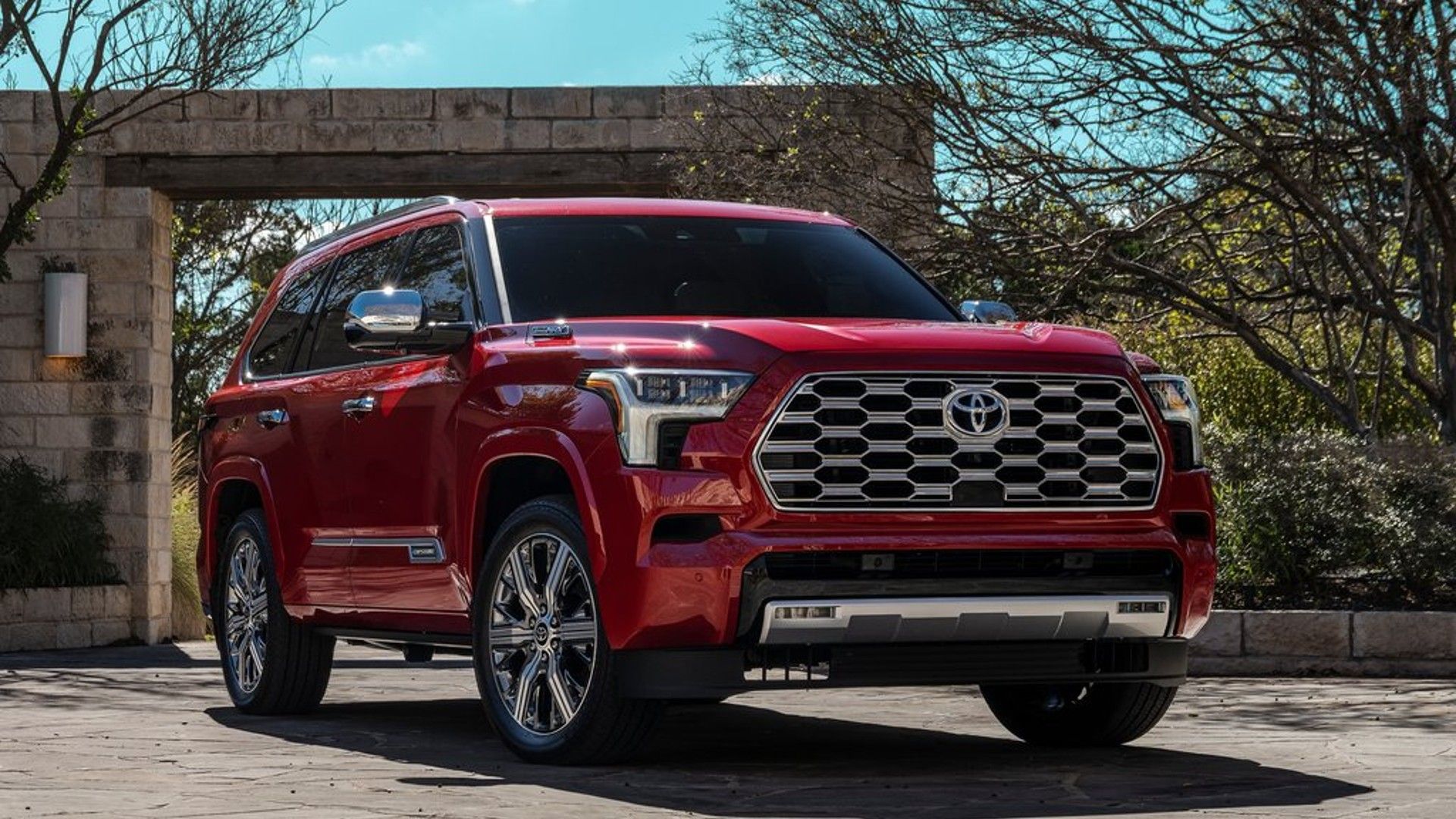
Every Toyota Hybrid SUV Ranked By Fuel Efficiency
Toyota has released a number of hybrid SUVs over the years, Here’s how all of them stack up against each other in terms of fuel efficiency.
What Toyota’s Electric Future Looks Like
Contrary to what Toyota has said previously, it is not just hydrogen-powered cars that they are pushing to make and roll out across the world, but in a shock move to a couple and a sensible move to many, Toyota plans to unveil new EVs after 2026 with the hope of selling millions of them, much the same as it has with hybrids for the last 25 years.
Plus, it is now committing to more electrification of its cars in the U.S. with billions of dollars of investment in the U.S. battery-powered auto market. Is it a move because they truly believe in all-electric cars? Or, have they woken up to what is happening in the automotive world finally? We are excited to see what they will bring both in the form of fully electric cars, hybrids, and its fabled hydrogen-powered machines.
New Cars On The Horizon, Well In 2024 Anyway
For Toyota’s 2024 lineup, we are still only seeing hybrids, one fully electric but no new hydrogen-powered 2024 Mirai! Just the Mirais being used at the 2024 Paris Olympics. So what is Toyota bringing to the table in 2024 that is new and exciting?
Unfortunately, some of its models are not going to benefit from any change as, according to Toyota, has already been through a complete redesign for the 2023 model. We do see a couple of new trims available for the Corolla with the return of the Nightshade trim but, looking at the list below, we see that some EPA-estimated combined MPGs have actually gone down next year compared to the 2023 models.
Toyota is releasing a 2024 bZ4X, but information on that is being kept under wraps until January 2024 so we are unable to speculate what the specs and performance will be like but have ur fingers crossed for good things. We are hoping, probably like yourselves, that the cars that have been promised for 2026 and onward are really game-changing!
2024 Toyota Hybrid And Electric Models
|
Model |
2024 Crown |
2024 Corolla Cross Hybrid |
2024 Corolla Hybrid |
2024 Highlander Hybrid |
2024 Grand Highlander |
2024 Prius |
2024 Prius Prime |
2024 RAV4 Hybrid |
2024 RAV4 Prime |
2024 Sienna |
2024 Sequoia |
2024 Camry |
2024 Tundra |
2024 Venza |
|
Engine/Motor |
2.5 Liter, Inline Four/ |
2.0 Liter, Inline Four/53KW HSD Motor |
1.8 Liter, Inline Four Hybrid |
2.5 Liter, Inline Four Hybrid |
2.5 Liter, Inline Four Hybrid |
2.0 Liter, Inline Four/X2 AC Motors |
2.0 Liter, Inline Four/120 KW Motor |
2.5 Liter, Inline Four/ x3 Permanent-Magnet Synchronous Motors |
2.5 Liter, Inline Four/x3 Permanent-Magnet Synchronous Motors |
2.5 Liter, Inline Four/x3 Permanent-Magnet Synchronous Motors |
3.5 Liter V-6/AC Motor |
2.5 Liter, Inline Four/x2 AC Motors |
3.5 Liter V-6/AC Motor |
2.5 Liter, Inline Four/x3 AC Motors |
|
Horsepower |
236 Horsepower |
196 Horsepower |
138 Horsepower |
243 Horsepower |
245 Horsepower |
196 Horsepower |
220 Horsepower |
219 Horsepower |
302 Horsepower |
245 Horsepower |
437 Horsepower |
208 Horsepower |
437 Horsepower |
219 Horsepower |
|
Torque |
Unpublished |
Unpublished |
105 Pound-Feet |
175 Pound-Feet |
Unpublished |
Unpublished |
Unpublished |
199 Pound-Feet |
Unpublished |
199 Pound-Feet |
583 Pound-Feet |
Unpublished |
583 Pound-Feet |
149 Pound-Feet |
|
Drivetrain |
All-Wheel Drive |
All-Wheel Drive |
Front-Wheel Drive |
Front-Wheel Drive or All-Wheel Drive |
All-Wheel Drive |
All-Wheel Drive |
Front-Wheel Drive |
All-Wheel Drive |
All-Wheel Drive |
All-Wheel Drive |
Rear-Wheel Drive or All-Wheel Drive |
Front-Wheel Drive |
Rear-Wheel Drive or All-Wheel Drive |
All-Wheel Drive |
|
Transmission |
CVT |
eCVT |
eCVT |
eCVT |
CVT |
CVT |
CVT |
CVT |
CVT |
CVT |
Ten-Speed Shiftable Automatic |
CVT |
Ten-Speed Shiftable Automatic |
CVT |
|
Combined MPG |
41 MPG |
Unpublished |
50 MPG |
36 MPG |
34 MPG |
49 MPG |
48 MPG |
40 MPG |
38 MPG |
35 MPG |
20 MPG |
46 MPG |
22 MPG |
39 MPG |
|
0 – 60 MPH |
Unpublished |
Unpublished |
Unpublished |
Unpublished |
Unpublished |
Unpublished |
Unpublished |
Unpublished |
Unpublished |
Unpublished |
Unpublished |
Unpublished |
Unpublished |
Unpublished |
|
Top Speed |
Unpublished |
Unpublished |
Unpublished |
Unpublished |
Unpublished |
Unpublished |
Unpublished |
Unpublished |
Unpublished |
Unpublished |
Unpublished |
Unpublished |
Unpublished |
Unpublished |
(Information gathered from Toyota, EPA.gov, and Car & Driver)
Looking Forward To EVs, Hydrogen Beasts, And Longer Range Batteries In The Coming Years
In April 2023, Toyota welcomed its new CEO, Koji Sato, who has pledged to drastically revamp the company’s electric vehicle position in the world by 2026. Promising that the company will again be a market leader by utilizing the most innovative technology, the next generation of Toyota vehicles will be based on a new generation of battery and platform architecture.
He has also promised to continue Toyota’s work in utilizing hybrids, plug-in hybrids, and hydrogen-powered vehicles. 30 years or so of work would be wasted if scrapped after all. In the pipeline, Toyota has got some awesome-looking concept cars, a new strategy for EV production, and the use of solid-state batteries.
Toyota is already developing the SUV-styled, fully electric FT-3e and sporty and sultry-looking FT-Se cars. And from the looks of the sneak peek previews on their press releases, the FT-Se is going to be a mean-looking, road-hugging, seat-pinning machine that will feature Toyota’s next generation of electric platform and provide the best driving experience and performance for their future customers (if people haven’t fallen totally out of love with Toyota by then due to long waits and lots of promises).
We are also looking forward to seeing the solid-state batteries that can deliver a whopping 745 miles from a single charge! Toyota has claimed that it has now made a breakthrough in this department. This could make Toyota a force to reckon with in the EV industry in the coming years. With so much to look forward to after a pedestrian couple of years of being out of the EV game, the next generation sounds promising from one of the world’s leading car manufacturers.


